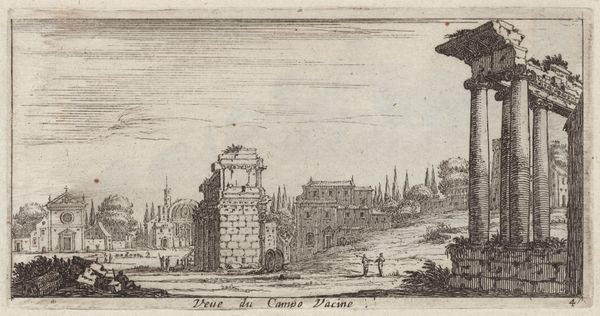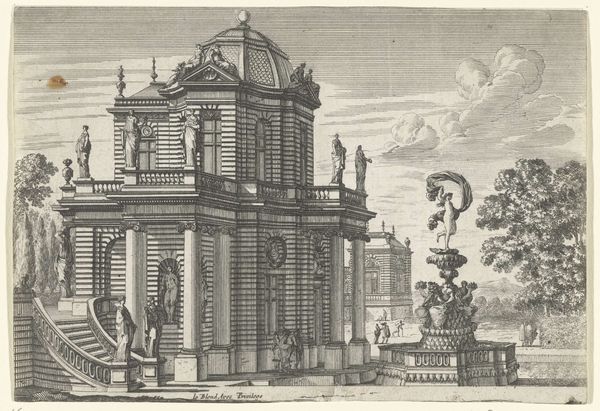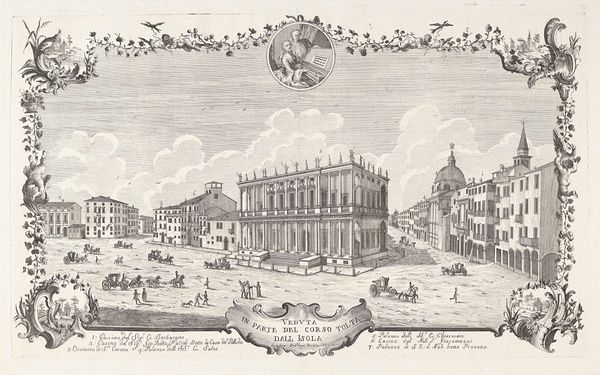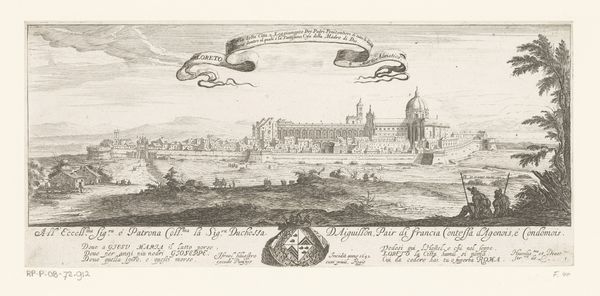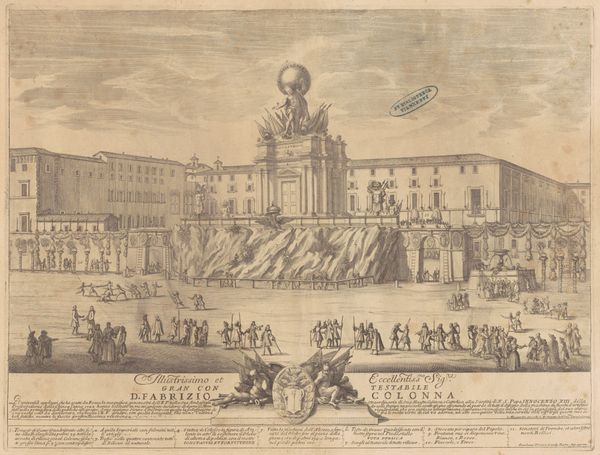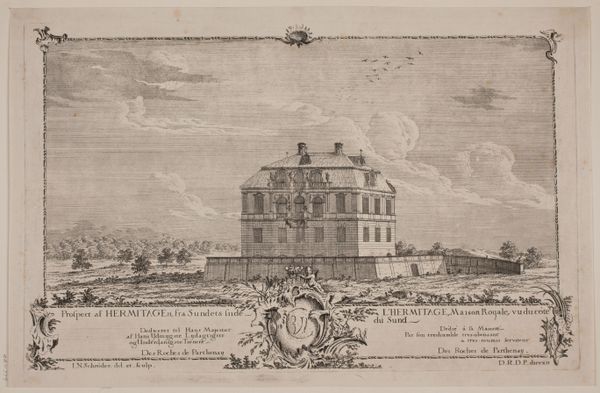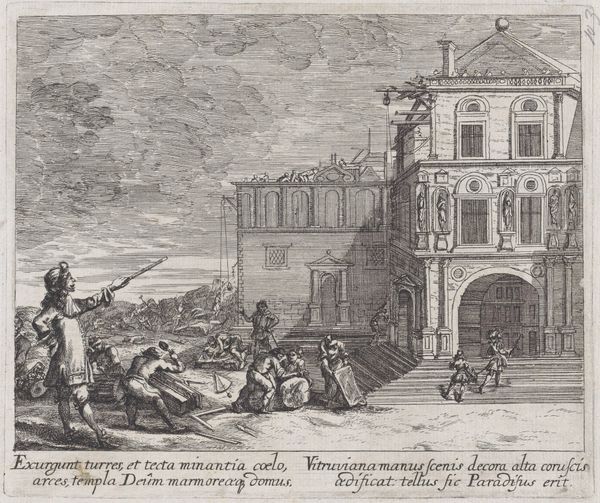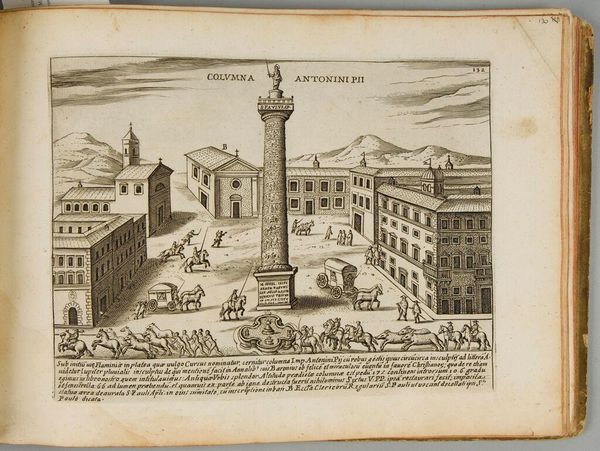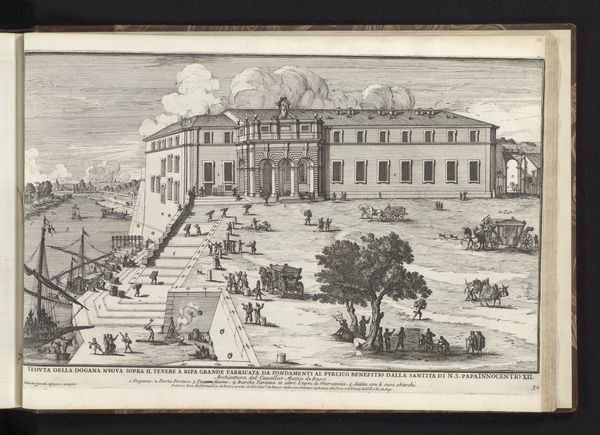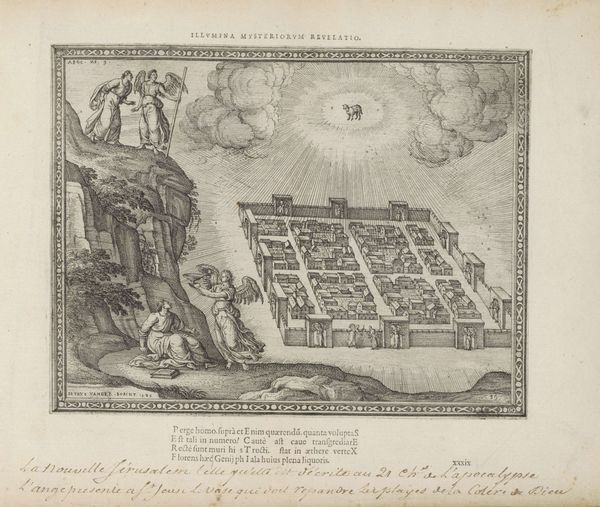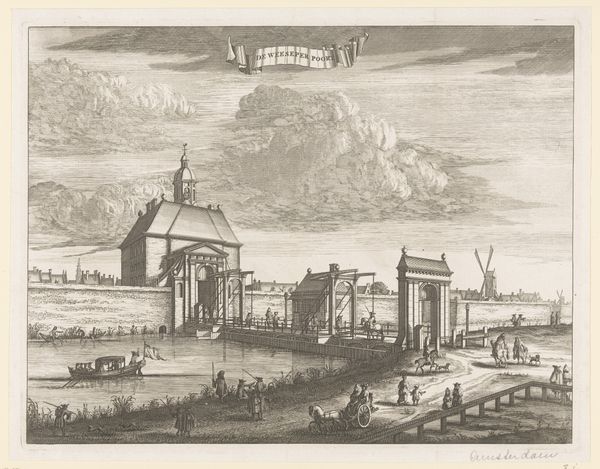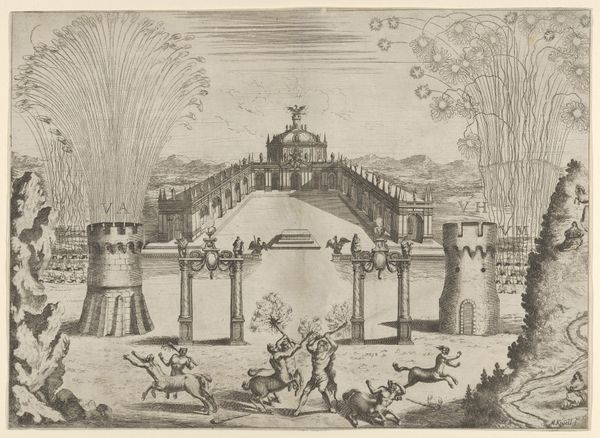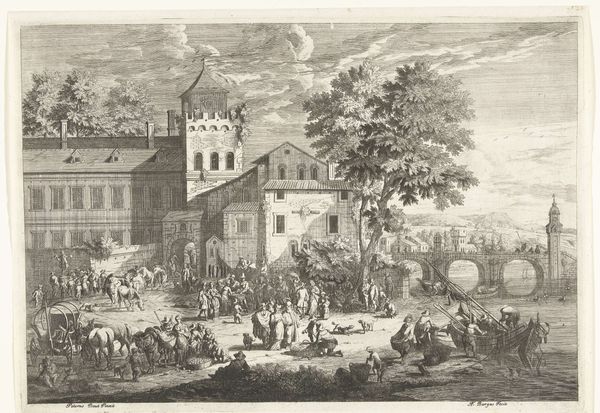
print, etching, engraving
#
baroque
# print
#
etching
#
landscape
#
cityscape
#
engraving
Dimensions: plate: 12.1 × 24.8 cm (4 3/4 × 9 3/4 in.) sheet: 21.1 × 33 cm (8 5/16 × 13 in.)
Copyright: National Gallery of Art: CC0 1.0
This print of the Chiesa di Sta Francisca Romana in Campo Vaccine was made by Israel Silvestre, sometime in the mid-17th century. It’s an etching, meaning that the artist would have coated a copper plate with wax, scratched the image into the wax, and then submerged the plate in acid. This would bite away the exposed lines, allowing for multiple impressions to be made. Think about this reproducible technique in relation to the scene depicted. Silvestre shows the church in a state of relative disrepair, surrounded by grazing animals and peasants. The romantic ruin was a popular trope at the time, but prints like this also served as records of the social realities of Rome: the economic pressures on the church, and the labor of those who lived in its shadow. By understanding the etching process, and the way it allowed Silvestre to disseminate this image widely, we can appreciate how this work blurs the boundaries between documentation, artistic expression, and social commentary.
Comments
No comments
Be the first to comment and join the conversation on the ultimate creative platform.
